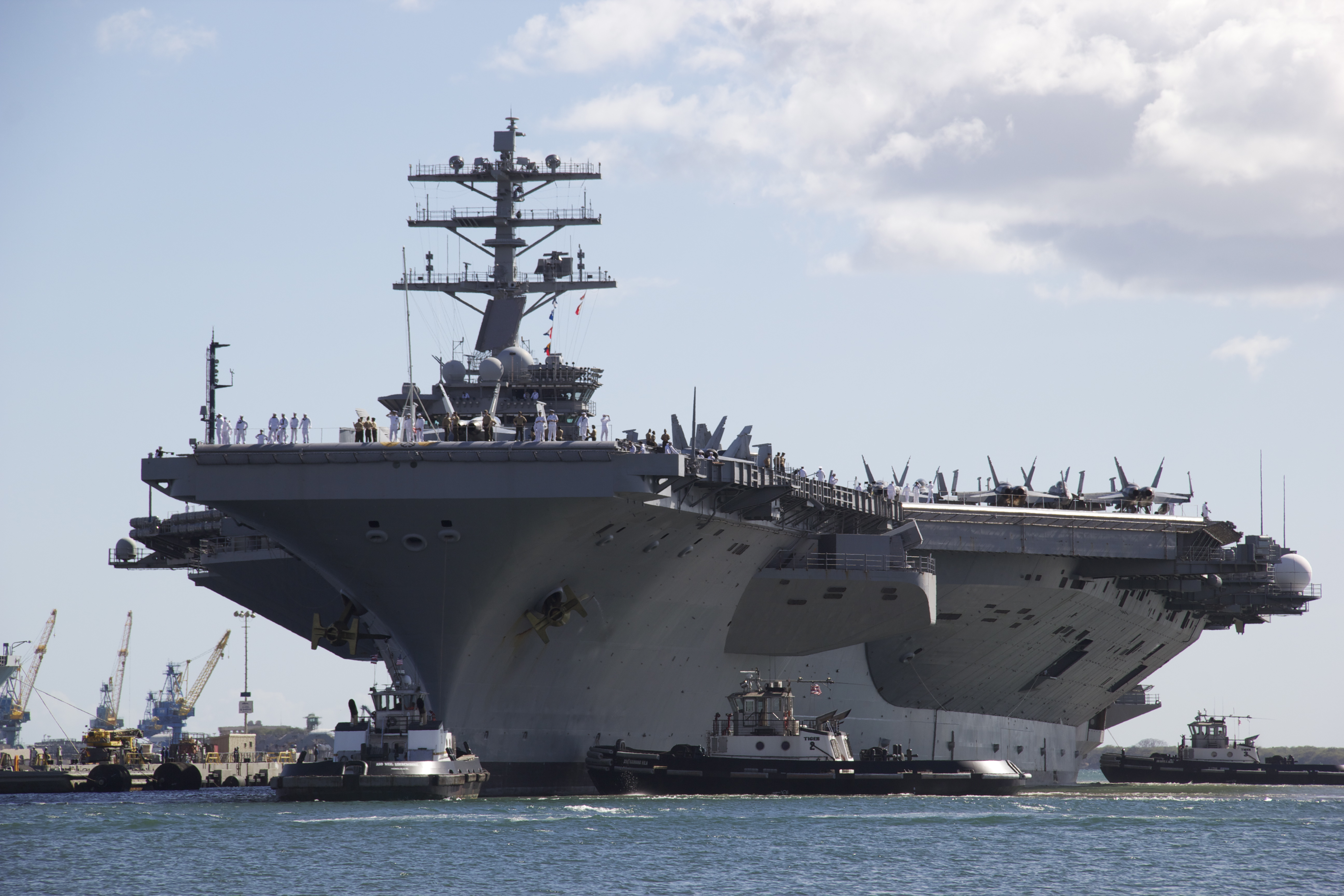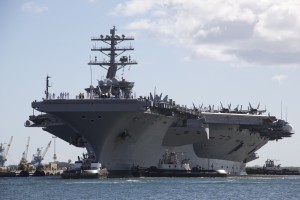
Biofuels Power Carrier Strike Group during RIMPAC Exercises off Hawaii
The Navy is orchestrating an exercise in the Pacific Rim today that will showcase its strategic investment in biofuels. The Navy is testing alternative fuels on the U.S.S. Nimitz’s carrier strike group that will participate in the six-week long Rim of the Pacific (RIMPAC) exercises. These exercises, which take place off the coast of Hawaii, include 22 country’s naval forces; it is the world’s largest annual naval warfare exercises.
The carrier strike force consists of the Nimitz and its airwing, Carrier Wing 11, along with three destroyers, the Princeton, the Chafee, and the Chung Hoon. The ships and aircraft (except the nuclear powered carrier) are powered by an alternative fuel blend of a 50-50 mixture of biofuel (made from used cooking oil and algae) and petroleum-based marine diesel or aviation fuel. The Navy purchased 450,000 gallons of biofuels for this exercise in December, for a total cost of about $12 million.
The Secretary of the Navy Ray Mabus has pushed for a broad investment in alternative fuels as part of an initiative to reduce the military’s dependence on oil. The military’s oil dependence has been widely viewed by military leaders as a strategic vulnerability and an imposing national security issue.
Biofuels are an important step in providing a competitive alternative to petroleum based fuel, helping to reduce the military’s use of oil in the long term.
In an interview with Stars and Stripes, Secretary Mabus stated “We’re not doing this for environmental reasons… We’re doing it to remove … one of the biggest vulnerabilities I see for us as a military and as a nation.”
The Navy has announced plans to deploy the alternative fuel powered carrier strike force by 2016. However, funding for military biofuels testing has been laid on the chopping block. A provision added by the House Armed Service Committee to the Department of Defense’s (DoD) FY2013 budget would ban the future purchasing of biofuels until they are competitively priced with fossil fuels.
Congressional opponents are concerned with excessive fuel costs in a year where the military’s budget is being slashed. However, the Navy’s $12 million biofuels purchase for the Pacific Rim exercises, representing a mere.002 percent of the DoD’s budget.
Eliminating biofuels testing would set back efforts by the military to transition to alternative fuels in the long-term and will only save the military a miniscule amount of funding.
Whatever Congress decides, testing biofuels on the Nimitz’s carrier strike group is sure to be a milestone in Navy history. Running a carrier strike group on mostly alternative fuels is a powerful expression of the Navy’s alternative energy plans. The Navy has moved from wind to coal to oil to partially nuclear to power its fleets. With the strategic risks posed by oil dependence, Biofuels will likely be the Navy’s future energy source.
David Riggs, from Fleet Logistic Center Puget Sound, Wash., secures a fueling hose during a biofuel transfer to the USNS Henry J. Kaiser on July 13, 2012.







[…] of the Navy Ray Mabus published an op-ed touting the success of the Rim of the Pacific Exercise (RIMPAC) in the U-T San Diego News. While the piece does not discuss any new policy concerning the Navy’s […]
[…] Navy has been most aggressive in this regard, with its “Great Green Fleet” on display in July as part of the RIMPAC exercises. The U.S. Nimitz and its airwing, Carrier […]